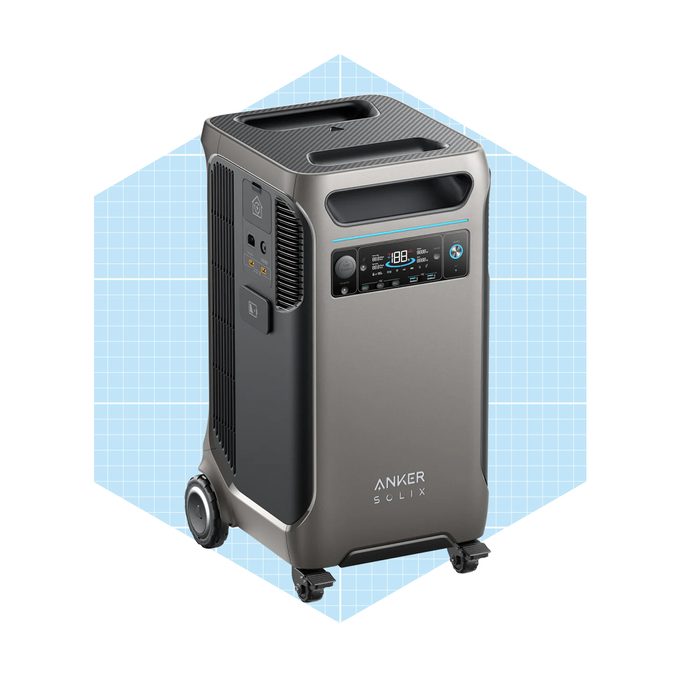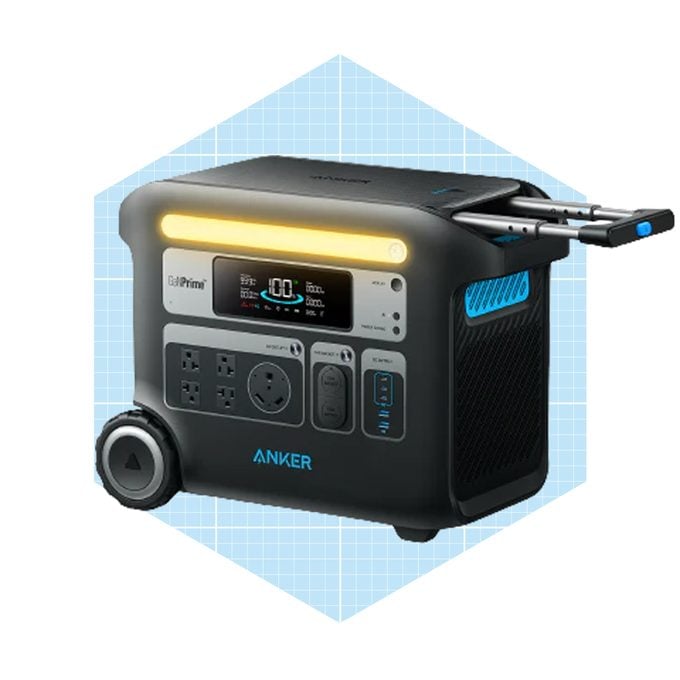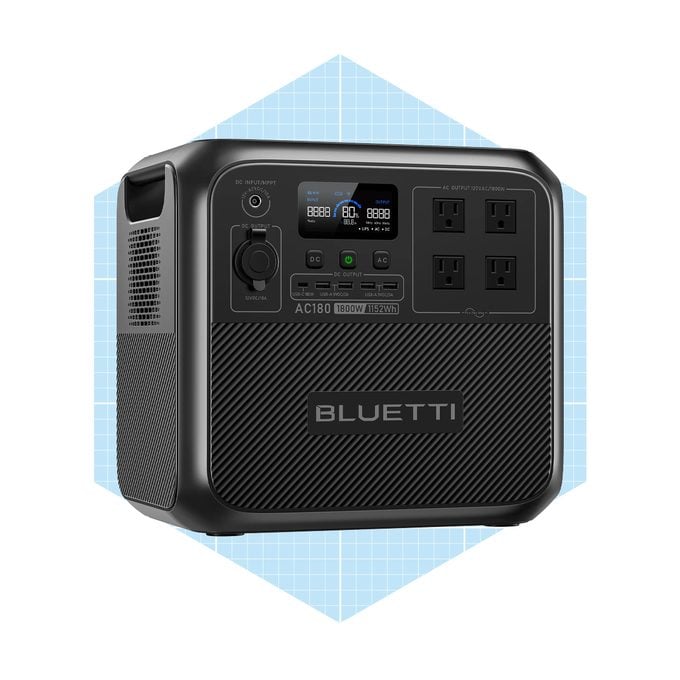Take that noisy generator off the back of the truck. There’s no need to yell at your coworkers over the drone of an engine, placate angry neighbors in the early morning hours or deal with gas and diesel messes and maintenance. Portable power stations have finally become a practical alternative.
Thanks to rapidly evolving tech and consumer demand, these battery-powered generators are quiet, clean, reliable, maintenance free and powerful enough to run nearly every tool in the shed. They’re changing the game for professional trades, recreational vehicles and home backup power.
My partner and I tested a dozen models over the last year, in tasks ranging from clearing our quarter-acre lot with an electric lawnmower and weed whacker to mobile construction work to running an off-grid refrigerator for weeks at a time. We’ve also watched the technology ramp up significantly.
Whether you’re trying to power an off-grid or mobile worksite, here’s what we’ve learned about choosing a portable power station capable of handling your needs.
What Is a Portable Power Station?
Portable power stations, aka portable solar generators, are rechargeable battery banks bundled with a charger, inverter, built-in solar charge controller and various outlets.
Most portable power stations can be recharged from wall outlets, solar panels, or while driving via the vehicle’s 12-volt outlet or a direct current to direct current (DC to DC) charger setup.
Types of Portable Power Stations
Portable power stations are classified by capacity, battery composition and inverter strength.
Smaller “power banks” can fit in a purse or backpack to recharge your phone or laptop. Larger power stations can run trailers, tools and home/shop back-up power systems.
Capacity in watt hours (Wh)
To figure out what capacity you need, add the wattage of your tools and the duration you’ll be using them. A 2,000-Wh station can run 1,000-Wh of tools for two hours. A 1,000-Wh drill running for six minutes will use 100 Wh of power.
Battery composition
Nearly all portable power stations use lithium batteries with NiMiNmCoO2 (NMC) or LiFePo4 (LFP) technology. Most companies are moving toward LFP because it’s less prone to thermal runaway and can be charged/discharged 5,000 cycles on average, vs. NMC’s 500-ish cycles.
There is also at least one manufacturer using solid-state lithium technology.
Inverter capabilities
Make sure a portable power station’s inverter can handing your tools’ maximum alternating current (AC) watt output, which is different than watt-hours, as well as their max surge.
What Can Portable Power Stations Do?
- Provide 240V AC, 120V AC or 12V DC power for tools and appliances.
- Lessen your impact on job sites by eliminating noise and exhaust.
- Reduce your carbon footprint by replacing gas and diesel-powered generators.
- Save money on electricity by recharging from solar panels.
- Save time and money over gas generators, because they’re maintenance free.
What Can’t Portable Power Stations Do?
- Be used when ambient temperatures are below freezing or higher than 104 degrees.
- Be transported on airlines, unless specially prepared.
- Provide more than 25 amps of 240V power.
- Provide unlimited electricity without recharging.
Best Portable Power Stations for Mobile Workshops and Job Sites
Here are a few of our favorite portable power stations. All offer LFP battery technology, fast recharge rates and a large capacity. Most also offer expansion batteries.
Anker Solix F3800
We eagerly awaited the 2024 release of Anker’s Solix F3800 because it’s one of the first power stations with a 240V outlet. It can run pretty much any 120V power tool, including welders that draw less than 25 amps, and even boost an EV’s range by eight or so miles. It also has a 30-amp outlet for trailers/RVs.
- Offers 3,800 Wh, expandable to 53.8 kWh.
- A 6,000-watt inverter can handle 9,000 peak surge watts for 10 seconds.
- Takes two hours or so to recharge.
Goal Zero Yeti Pro 4000

Another new offering, Goal Zero’s Yeti Pro 4000, packs 4,000 Wh into a sturdy, compact unit. It features a 30-amp 120V outlet, which can be used to plug in a trailer/camper.
It runs most power tools as well as Goal Zero’s Skylight, a 6,000-lumen work light that illuminates 300-sq.-ft. with a strikingly pleasant color temperature.
- Offers 4,000 Wh, expandable to 20 kWh.
- A 3,600-watt inverter can handle 7,200 peak surge watts.
- Takes two hours to recharge.
Anker Solix F2000

If your power demands lower, Anker’s Solix F2000 is more affordable and easier to lift in and out of a vehicle. It’s still capable of powering many tools, making it great for punch-list stops, maintenance tasks and most lawn care. It also features a 30-amp plug so it can power basic systems in a trailer/camper throughout the day or overnight.
- Offers 2,048 Wh, expandable to 4,096 watt-hours.
- A 2,400-watt inverter can handle a 2,800-watt surge.
- Takes about two hours to recharge.
Bluetti AC180

Compact and easily portable at 38 pounds, Bluetti’s AC180 will keep a Bluetooth speaker, phone and tool batteries charged all day. I can also run a drill and other lighter-duty tools on it.
We really like their larger AC200L and AC200Max, solid 2,400-watt stations with battery expansion options, which we’ve taken through some fun rigors as well.
- Offers 1,152 Wh.
- A 1,800-watt inverter can handle a 2,700-watt surge.
- Recharges in about an hour.
Article source here: What To Know About Portable Power Stations


No comments:
Post a Comment